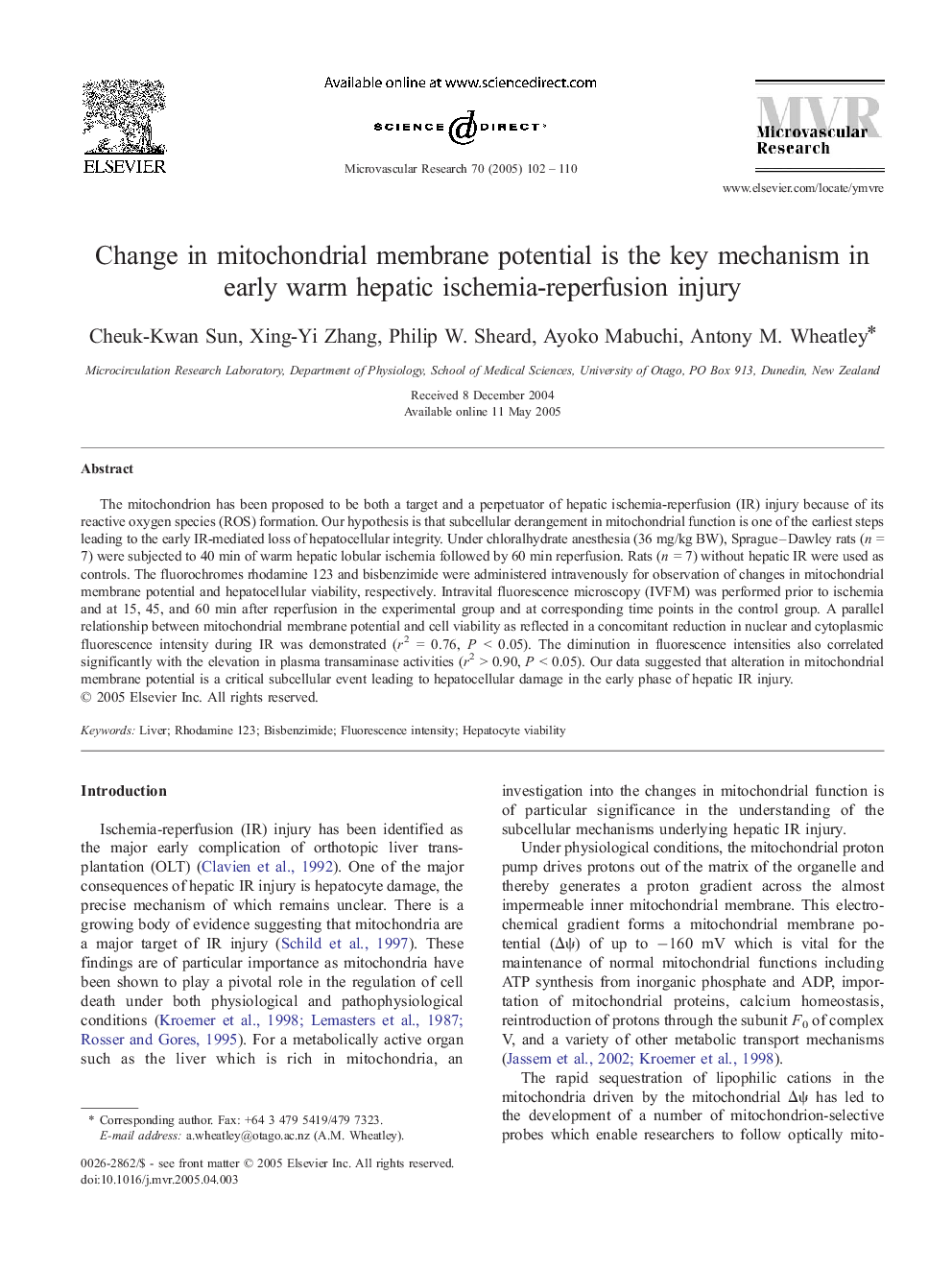| Article ID | Journal | Published Year | Pages | File Type |
|---|---|---|---|---|
| 9893122 | Microvascular Research | 2005 | 9 Pages |
Abstract
The mitochondrion has been proposed to be both a target and a perpetuator of hepatic ischemia-reperfusion (IR) injury because of its reactive oxygen species (ROS) formation. Our hypothesis is that subcellular derangement in mitochondrial function is one of the earliest steps leading to the early IR-mediated loss of hepatocellular integrity. Under chloralhydrate anesthesia (36 mg/kg BW), Sprague-Dawley rats (n = 7) were subjected to 40 min of warm hepatic lobular ischemia followed by 60 min reperfusion. Rats (n = 7) without hepatic IR were used as controls. The fluorochromes rhodamine 123 and bisbenzimide were administered intravenously for observation of changes in mitochondrial membrane potential and hepatocellular viability, respectively. Intravital fluorescence microscopy (IVFM) was performed prior to ischemia and at 15, 45, and 60 min after reperfusion in the experimental group and at corresponding time points in the control group. A parallel relationship between mitochondrial membrane potential and cell viability as reflected in a concomitant reduction in nuclear and cytoplasmic fluorescence intensity during IR was demonstrated (r2 = 0.76, P < 0.05). The diminution in fluorescence intensities also correlated significantly with the elevation in plasma transaminase activities (r2 > 0.90, P < 0.05). Our data suggested that alteration in mitochondrial membrane potential is a critical subcellular event leading to hepatocellular damage in the early phase of hepatic IR injury.
Related Topics
Life Sciences
Biochemistry, Genetics and Molecular Biology
Biochemistry
Authors
Cheuk-Kwan Sun, Xing-Yi Zhang, Philip W. Sheard, Ayoko Mabuchi, Antony M. Wheatley,
